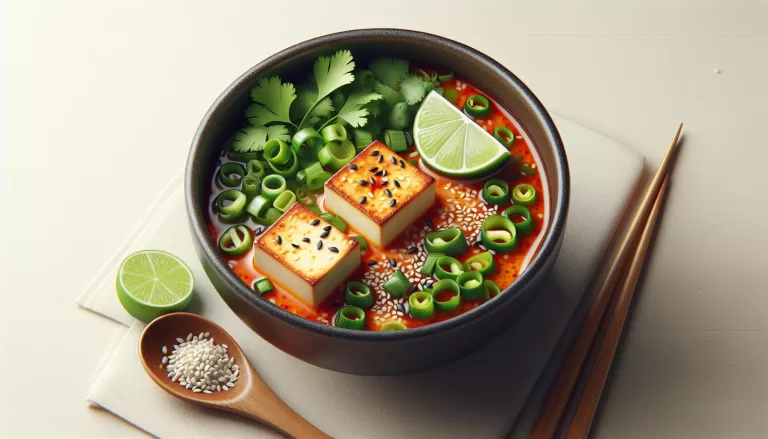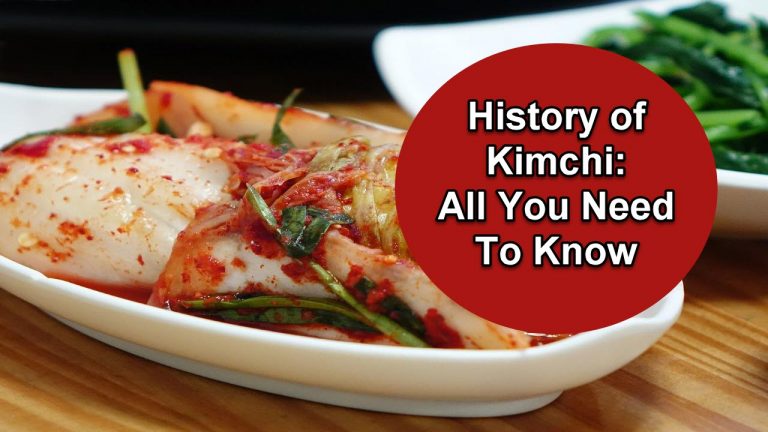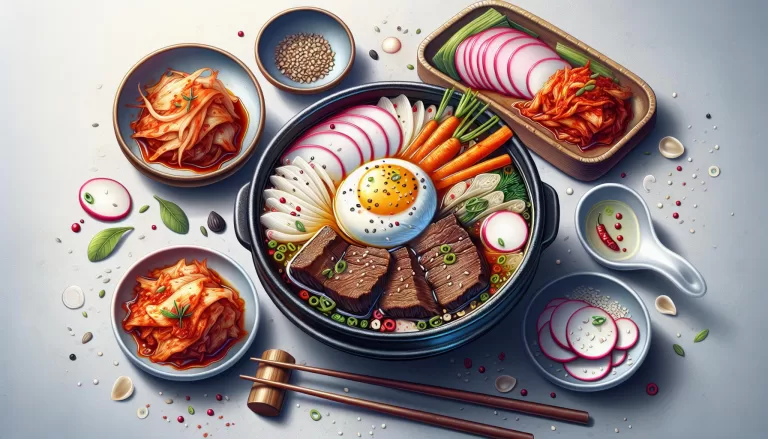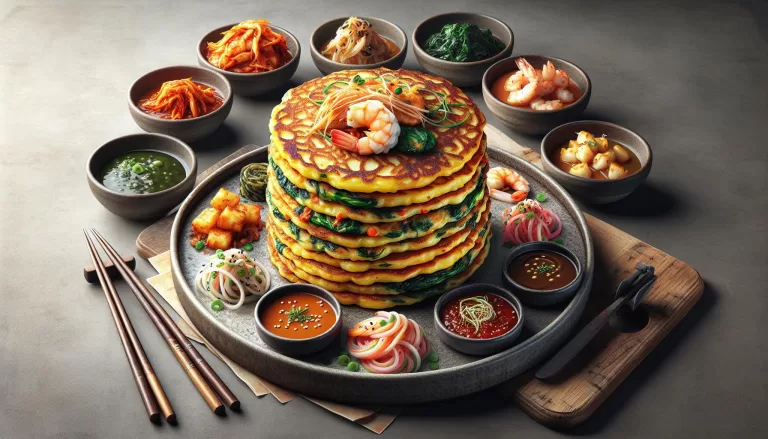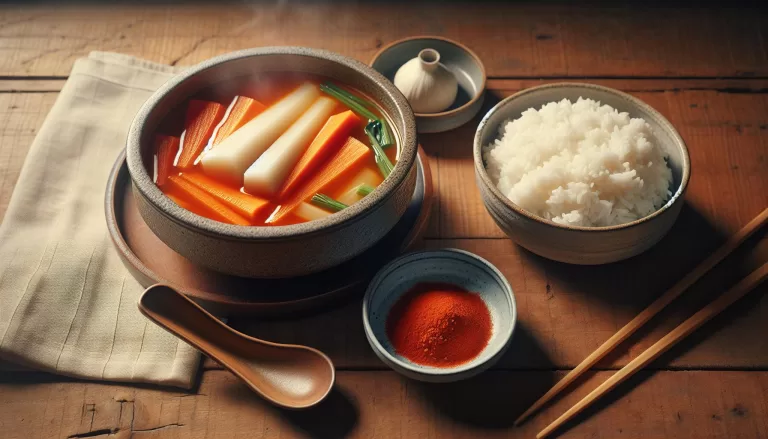Easy and Versatile Homemade Dak Galbi Recipe – Experiment with Seafood and Vegetables
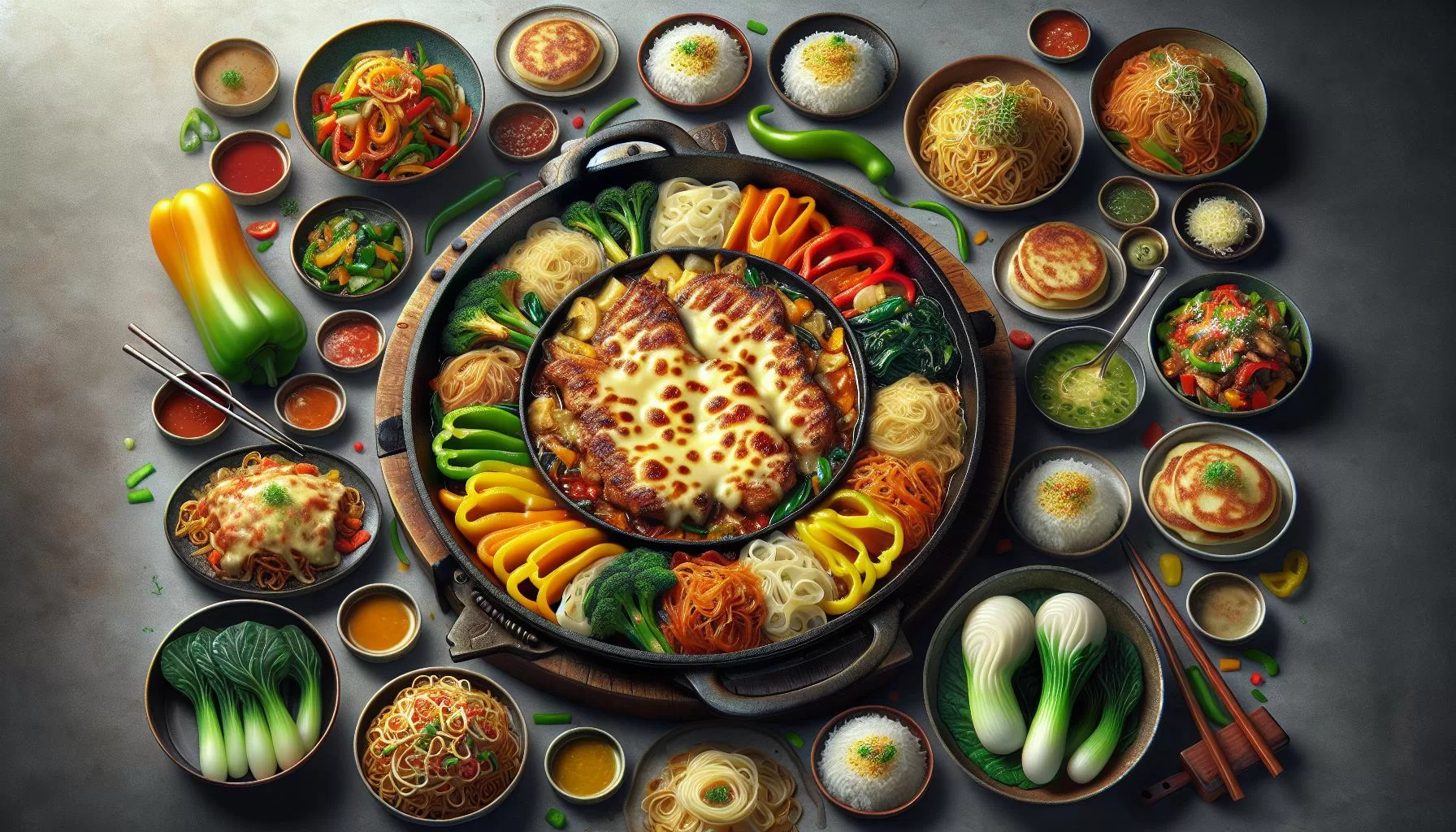
Ingredients for Homemade Dak Galbi Recipe
In your pursuit of making authentic Dak Galbi at home, let’s kick things off with the ingredients list. These are your building blocks to a Korean culinary masterpiece.
| Ingredient | Quantity |
|---|---|
| Boneless chicken thighs | 450g |
| Sweet potato | 1 medium-size |
| Korean rice cake | 200g |
| Cabbage | 1 small size |
| Perilla leaves | 10 |
| Hot pepper paste (Gochujang) | 2 tablespoons |
| Chopped garlic | 1 tablespoon |
| Sesame oil | 1 tablespoon |
| Soy sauce | 2 tablespoons |
Boneless chicken thighs are our top pick – they’re not only juicy and tender, but they absorb marinade fabulously. However, if you prefer a leaner cut, boneless skinless chicken breast will work too.
Sweet potato gives a touch of sweetness to balance out the dish’s spicy kick. Can’t find any? No worries! Regular potatoes are a great alternative.
Here’s a tip that will take your Dak Galbi to another level – soak the Korean rice cake in water before cooking. This ensures that they become more tender when stir-fried.
Cabbage and perilla leaves create a balance with their refreshing crunch. If perilla leaves are not available, fresh basil leaves could be a great swap!
To create the spicy kick synonymous with Dak Galbi, you’ll need 2 tablespoons of hot pepper paste (Gochujang). Along with Gochujang, chopped garlic, soy sauce, and a touch of sesame oil will form the base for your savory marinade.
Once you’ve secured all these ingredients, you’re all set to start cooking. Blend them together to experience the rich, spicy flavors of Korea in your kitchen.
Step-by-Step Instructions

To embark on your culinary journey to create homemade Dak Galbi, here are easy-to-follow steps. Before we dive into it, make sure you have all your ingredients handy. Pull up this list from your saved files, grab your apron, and let’s fire up the stove!
- Preparation of Chicken: Start by marinating your boneless chicken thighs. In a mixing bowl add the chicken. Now combine two tablespoons of hot pepper paste (Gochujang), two tablespoons of soy sauce and a tablespoon of minced garlic. Massage these flavor-filled pastes into your chicken. Let the chicken absorb the marinade for around 20 minutes. Feel free to leave it for longer; the more it marinates, the better its texture and flavor.
- Vegetable Prep: While your chicken is soaking up all that goodness – start cutting your veggies. Slice the sweet potato, shred the cabbage, and julienne the perilla leaves. Keep them separate; we’ll add them at different stages.
- Cooking: Once your chicken had enough time to marinate, bring out your largest pan. Spread the chicken evenly across the pan, add a touch of sesame oil and stir on medium heat. After the chicken starts turning golden brown, inject some color into your pan by adding in your sliced sweet potato and cabbage. Keep stirring everything to make sure each piece gets cooked evenly.
- Finishing Touches: After the chicken is cooked, and the veggies are soft, it’s time to introduce the Korean rice cake. Sprinkle them in, give your dish a good stir and let it simmer for a good 5 minutes. The rice cake will absorb the flavors and add a unique texture to your creation.
Here’s a quick table of the ingredients you’ll need and their quantities:
| Ingredient | Quantity |
|---|---|
| Boneless Chicken Thighs | 2 pounds |
| Sweet Potato | 1 large |
| Cabbage | Half |
| Perilla Leaves | 10-12 |
| Korean Rice Cake | 1 cup |
| Hot Pepper Paste (Gochujang) | 2 tablespoons |
| Garlic | 1 tablespoon |
| Soy Sauce | 2 tablespoons |
| Sesame Oil | As required |
Tips for Making the Best Dak Galbi

Now that you’ve got the basic process, here are some tricks for truly elevating your Dak Galbi game.
First up, let’s talk about marination. The longer the chicken marinates, the tastier it becomes. So, consider leaving it overnight in the fridge for the best results – that extra time can make all the difference. You’ll be hit with a powerful flavor punch that’ll remind you it’s worth the wait.
Second, don’t underestimate the importance of veggies. Using fresh crunchy veggies is great, and sure, sweet potatoes, cabbage, and perilla leaves are standard. But don’t be afraid to experiment! Add in thinly sliced mushrooms or some bright bell peppers. The added color, texture, and taste could be your Dak Galbi signature.
Heat management is also a key player. Remember, you’re stir-frying, not deep frying. Keep that flame medium-high. This way, you avoid charring your ingredients or ending up with soggy veggies. We’re aiming for a delightful mix of slightly crispy chicken and perfectly crunchy vegetables.
Are you interested in giving your dish extra kick? Kimchi could solve all your problems. Mellow some kimchi in the pan before adding your chicken. This gives the whole dish another level of flavor depth, taking your Dak Galbi from great to unforgettable.
Last but not least, the Korean rice cake (Tteok). Add these in only after your chicken is fully cooked. Overcooked rice cakes aren’t a delight. We want them soft but chewy, fully absorbing all the stir-fry flavors without losing their own.
For those of you wondering about nutritional value, here’s a table on the benefits of this wholesome dish:
| Nutrient | Quantity |
|---|---|
| Calories | High |
| Carbs | Moderate |
| Protein | High |
| Fat | Low |
| Vitamins | Varied |
Sure, chicken’s got a healthy dose of protein. But don’t forget about the vitamins packed in those veggies!
Serving and Enjoying Dak Galbi

After the preparation, it’s time to get this delightful feast on the table. Serving Dak Galbi is as important as cooking it. The right presentation can enhance your dining experience.
To serve Dak Galbi, you’ll need a large, flat pan – a traditional Korean grill pan if you have it. Place the cooked Dak Galbi in the center, arranging the beautifully stir-fried chicken and veggies in an appealing manner. Make sure the colorful vegetables and succulent pieces of chicken are evenly distributed.
Tip: Use a fresh lettuce leaf as a serving utensil for an authentic Korean experience.
Next comes the enjoying part. Grab that lettuce leaf, spoon some Dak Galbi on it, and fold it like a taco. It’s not just about the taste, the zest of eating it the Korean way adds to the joy.
Thinking about adding some side dishes? Let’s get you sorted. Here are a few options:
- Kimchi: A classic Korean accompaniment, kimchi provides a spicy, tangy balance to Dak Galbi’s rich flavor.
- Korean Rice Cakes (Tteokbokki): These chewy rice cakes can be stir-fried and added to the Dak Galbi or served along the side for added texture.
- Soju: It’s traditional Korean distilled alcohol, smooth, and pairs wonderfully with Dak Galbi.
Remember, it’s not just about following the recipe step by step, it’s about making it your own. Experiment with side dishes, try different vegetables, and find what works best for you. The most important part is to savor each bite and enjoy the experience of making and eating this Korean masterpiece at home.
Variations of Dak Galbi to Try

Variety, as they say, is the spice of life. When it comes to Dak Galbi, flexibility is key to finding the perfect version that suits your taste buds. Being an all-rounder dish, it’s open to experimentation and personalization. We’ll explore a few variations that you might like to try in your Dak Galbi adventure!
You could consider adding seafood for a flavorful twist. Some Dak Galbi recipes encourage the use of shrimp, squid, or clams. The addition of these ingredients not only enhances the taste but also enriches the nutritional content. Protein counts rise, lending merit to health buffs.
Go beyond just cabbage and sweet potatoes. Dak Galbi traditionally employs an assortment of vegetables. Why not play around with this aspect? Consider the inclusion of bok choy, bell peppers, or zucchini to introduce new textures and flavors.
Another enticing variation is the Cheese Dak Galbi. True to its name, this relative of Dak Galbi is generously garnished with cheese. The melted cheese blends wonderfully with the spicy chicken and creates a delightful blend of flavors. Adored by kids and adults alike, this version is perfect if you’re craving something unique and indulgent.
Let’s not forget the heat. How about a Spicier Dak Galbi? Dedicate some time to discover the perfect balance of fiery heat for your palate. Try adding more gochujang or a touch of fresh chili peppers. Who knows – you might find your perfect balance and heighten your appreciation for Korean cuisine!
If you’re looking at incorporating the Korean concept of bap-sang, or a table full of food, you could consider accompaniments. Toss in some mandu (Korean dumplings), a bowl of warm and savory Japchae (stir-fried noodles), or a plate full of seasoned Korean pancakes known as Pajeon. These side dishes can complement your homemade Dak Galbi remarkably well and provide a more authentic Korean dining experience.
Conclusion
So, you’ve seen the versatility and adaptability of Dak Galbi. It’s a dish that invites creativity, allowing you to mix in a variety of seafood or veggies. You can even turn up the heat with some gochujang or chili peppers if you’re feeling bold. And who could forget the cheese? A generous sprinkle of it can transform your Dak Galbi into a crowd-pleaser. Don’t forget to pair it with Korean staples like mandu, Japchae, and Pajeon to elevate your dining experience. Now it’s your turn to whip up this Korean classic. Whether you stick to the traditional recipe or add your own twist, you’re sure to impress with your homemade Dak Galbi.
